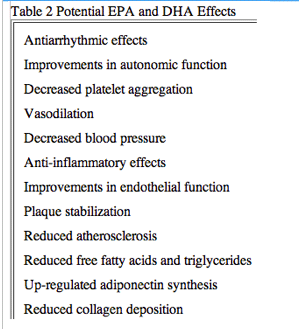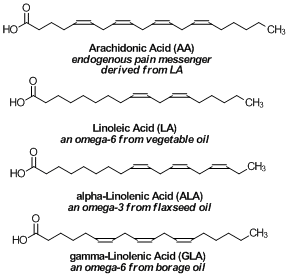Food chain -
| Image from the Victoria Dept. of Education |

The tale of two eggs -
It all began when I was making a recipe which required two eggs. One egg, the last in a carton I bought from the grocery store, came from a "cage free/grain fed" hen. The other was in a dozen I purchased from my local food co-op. This egg came from a foraging pastured hen raised on a north Texas family farm. As I attempted to crack the food co-op egg into the bowl, I noticed that the shell seemed thicker than the grocery store egg (a result of a diet providing the hen with more available calcium for egg shell formation) (10). However, what surprised me most was the difference in appearance between these two eggs. As you can see from the photo, the egg on the top is larger, has a much deeper yolk color and a cloudier egg white compared to the egg on the bottom.
Having been raised in the suburbs of Chicago and a suburbanite ever since, what I know about farming or livestock could fill a thimble. What I did know was that both of these eggs came from chickens, and I expected them to be rather similar. So, this got me to wondering:
- why are these two eggs different from each other?
- what might these differences mean from a nutritional standpoint?
- which egg represents the healthier option?
Cage free vs. free range vs. pastured -
 The carton my store bought eggs came in clearly states the eggs inside are from "cage-free/grain fed" hens. Okay, I'm sheepishly disclosing that the egg carton's labeling brought images to my mind of chickens happily roaming freely out in the sun and fresh air in a pleasant, green pasture, pecking away to their heart's content. The reality is that "cage free" simply means that the chickens don't live in cages. Admittedly, this is an improvement over the living conditions of caged chickens. However, according to the Humane Society of the United States, "hens laying eggs labeled as 'cage-free' [live] uncaged inside barns or warehouses, but they generally do not have access to the outdoors." Unlike caged birds, "they can engage in many of their natural behaviors such as walking, nesting and spreading their wings", although the cutting of their beaks is permitted (2). Ouch. This type of existence is a far cry from my naive and idyllic view of how I thought cage free chickens lived.
The carton my store bought eggs came in clearly states the eggs inside are from "cage-free/grain fed" hens. Okay, I'm sheepishly disclosing that the egg carton's labeling brought images to my mind of chickens happily roaming freely out in the sun and fresh air in a pleasant, green pasture, pecking away to their heart's content. The reality is that "cage free" simply means that the chickens don't live in cages. Admittedly, this is an improvement over the living conditions of caged chickens. However, according to the Humane Society of the United States, "hens laying eggs labeled as 'cage-free' [live] uncaged inside barns or warehouses, but they generally do not have access to the outdoors." Unlike caged birds, "they can engage in many of their natural behaviors such as walking, nesting and spreading their wings", although the cutting of their beaks is permitted (2). Ouch. This type of existence is a far cry from my naive and idyllic view of how I thought cage free chickens lived. Free range -
Free range chickens sound even better than cage free, right? Not necessarily. The University of California Division of Agriculture and Natural Resources states that free range eggs actually come from chickens that are generally allowed to "graze or roam outdoors" (3). This sounds great in theory, but is this what is actually happening? Evidently, not very often (4). My understanding is that there are no certifications in the US that pertain to "free range" eggs, only to free-range chickens sold for their meat. As a result, the words "free range" can be loosely interpreted and even more loosely applied. For example, in many cases "free ranging" chickens may have access to a tiny doorway in the building where they are confined. The door may be opened for only five minutes, and perhaps only 2 chickens exit through it, but this still qualifies a farm to state its chickens are free-ranging. "No other criteria such as environmental quality, number of birds, or space per bird, are included in the term free-range" (4).Now, some of you might be saying that this kind of cruelty to animals is a logical reason why we should not eat animal products. However, the purpose of this post isn't to discuss the issues pertaining to a vegan vs. non-vegan lifestyle. So, I am not going to delve into the very real problems inherent in the large scale production of eggs that result from our consumption and desire for an inexpensive product. A primary concern for us as food consumers is that we should be able to make informed decisions and choices about what we eat. This tale of two eggs highlights that the product labeling on egg cartons can be misleading and the eggs inside the carton, forgive the pun, might not be what they're cracked up to be. So, back to the tale and the pastured eggs I purchased from the food co-op.
Pastured -
The food co-op egg carton's label said their eggs came from pastured hens. Wondering what the term "pastured" really meant, I took my question straight to the source. According to Mrs. Connie Hale, who runs Windy Meadows Family Farm with her husband Mike and their children, the term "pastured" on their farm means that their "hens spend almost their entire life spans on grassy turf, most often protected [from predators] in large, movable bottomless pens, or electric netting enclosures." In this way, the chickens "have direct access to the forage and insects that make up their natural diet. The chickens are usually 'locked up' at night for added protection from predators, but at the first light of day are released to begin another day in the fresh outdoors."Big differences between cage free, free range and pastured hens -
If you'd like a better appreciation of the differences between the way factory farm eggs are produced vs. the sustainable, family scale agricultural way of producing eggs check out the video below:You can find the Cornucopia Institute's Organic Egg Scorecard here.
Chickens are what they eat too -
Eating eggs that come from hens raised on pasture have benefits beyond the more humane and sustainable aspects of this type of farming. Connie Hale from Windy Meadows Family Farm, also mentioned that because chickens are omnivores there are definite positive effects to the health of the hens and their eggs when they spend most of their lives outdoors foraging on the pasture in the fresh air and sunlight. This is because the natural diet of chickens consists of insects, worms, green plants, and seeds, among other things. This type of diet includes more diversity than the feed grain mix that most caged, cage-free, or free range chickens are fed (7). So, this answers my first question: Why are the two eggs in my tale different? They are different because of the hen's diet.Nutrition benefits from pastured eggs -
As Connie so aptly put it, "Everyone is healthier when he eats his greens, even our animals." Science is finding that animals allowed free access to pasture are generally healthier. Researchers have found that pastured foraging hens receive more beta carotene, magnesium and other vitamins and minerals than do animals who are not able to forage. When animals eat this type of diet this also translates into a healthier diet for those of us who eat the products that come from these animals (5).One study by Penn State's College of Agricultural Science showed that "compared to eggs of commercial hens, eggs from pastured hens had twice as much vitamin E and long-chain omega-3 fats, more than double the total omega-3 fatty acids and less than half the ratio of omega-6 to omega-3 fatty acids" (5). Western diets tend to be higher in omega-6's than omega-3's, but scientific evidence suggests that "higher dietary omega-3 intakes are associated with reductions in heart disease" (6). You can read more about the health benefits of these fats here. Researchers also found that the Vitamin A concentration was "38 percent higher in the pastured hens' eggs than in the commerical hens' eggs. Their research shows that nutrient levels present in the eggs are responsive to dietary changes in the hens.
Another study found that as compared to US Department of Agriculture (USDA) data for commercial "factory-farm" eggs, the eggs from hens raised on pasture contain:
- one third less cholesterol
- one quarter less saturated fat
- two thirds more vitamin A
- two times more omega-3 fatty acides
- three times more vitamin E
- seven times more beta carotene (this explains the bright orange color of the yolk)!
- three to six times as much vitamin D (it's good to get a little sun)! An example of what this translates to in our diet is "two scrambled eggs from pastured hens may give you 63 to 126 percent of the recommended daily intake of 200 International Units of vitamin D" (6). You can read more about Vitamin D here.
I wish I could say this this tale ends happily ever after, but I can't. The underlying issues still remain. As Michael Pollan points out, we consumers have the ability to force a change in food labeling and production processes. However, until this occurs the tale continues. Change is difficult and often requires concessions. As is evidenced by the price of the pastured eggs I purchased, one concession for consumers will come in the form of paying higher food prices. For many, this economy has brought a time of uncertainty where just getting any food on the table is difficult enough. Never the less, I encourage you to consider that cheap food is really more expensive in the long run. This is because it's generally lacking in nutrients. As a result, it leads to more disease and higher medical costs (8). There really is no escaping the fact that we are what we eat.
PS - In case you were wondering...which egg in the photo was from the foraging pastured hen? The top egg.
What does a cloudy egg white mean? "Cloudy egg whites usually indicate very fresh eggs" (3).
Sources
(1) Princeton Wordnetweb - http://wordnetweb.princeton.edu/perl/webwn?s=food%20chain
(2) Humane Society http://www.humanesociety.org/issues/confinement_farm/facts/guide_egg_labels.html
(3) University of California Dept. Natural Resources - http://ucanr.org/freepubs/docs/8154.pdf
(4) United Poultry Concerns - http://www.upc-online.org/freerange.html
(5) Penn State University - http://live.psu.edu/story/47514
(6) Linus Pauling Institute - http://lpi.oregonstate.edu/infocenter/othernuts/omega3fa/
(7) Mother Earth News - http://www.motherearthnews.com/natural-health/health-benefits-free-range-eggs.aspx
(8) Dr. Mark Hyman - http://www.huffingtonpost.com/dr-mark-hyman/why-quick-cheap-food-is-a_b_681539.html
(9) Ecoliteracy Michael Pollan - http://www.ecoliteracy.org/essays/we-are-what-we-eat
(10) Skyline College - http://www.skylinecollege.edu/case/biol215/docs/eggshell.pdf




